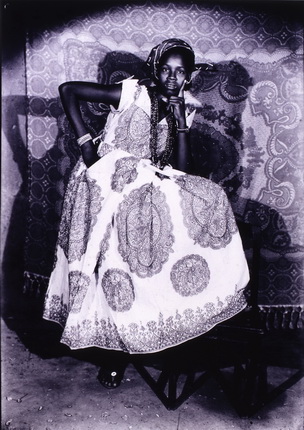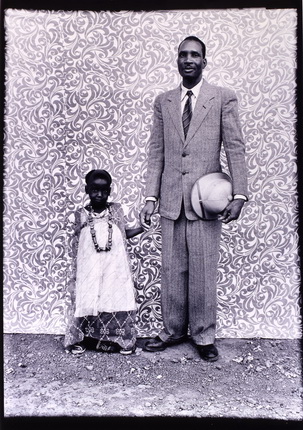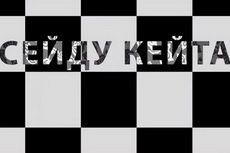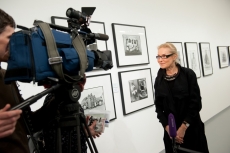Photographs from the Jean Pigozzi Collection












Seydou Keïta. Sans titre, 1952-55. Tirage argentique. © Keïta/IPM Courtesy CAAC-The Pigozzi Collection, Geneva
Seydou Keïta. Sans titre, 1952-55. Tirage argentique. © Keïta/IPM Courtesy CAAC-The Pigozzi Collection, Geneva
Seydou Keïta. Sans titre, 1956-57. Tirage argentique. © Keïta/IPM Courtesy CAAC-The Pigozzi Collection, Geneva
Seydou Keïta. Sans titre, 1949-51. Tirage argentique. © Keïta/IPM Courtesy CAAC-The Pigozzi Collection, Geneva
Seydou Keïta. Sans titre, 1959-60. Tirage argentique. © Keïta/IPM Courtesy CAAC-The Pigozzi Collection, Geneva
Seydou Keïta. Sans titre, 1959. Tirage argentique. © Keïta/IPM Courtesy CAAC-The Pigozzi Collection, Geneva
Seydou Keïta. Sans titre, 1956-57. Tirage argentique. © Keïta/IPM Courtesy CAAC-The Pigozzi Collection, Geneva
Seydou Keïta. Sans titre, 1958. Tirage argentique. © Keïta/IPM Courtesy CAAC-The Pigozzi Collection, Geneva
Seydou Keïta. Sans titre, 1952-55. Tirage argentique. © Keïta/IPM Courtesy CAAC-The Pigozzi Collection, Geneva
Seydou Keïta. Sans titre, 1956-57. Tirage argentique. © Keïta/IPM Courtesy CAAC-The Pigozzi Collection, Geneva
Seydou Keïta. Sans titre, 1952-55. Tirage argentique. © Keïta/IPM Courtesy CAAC-The Pigozzi Collection, Geneva
Seydou Keïta. Sans titre, 1952. Tirage argentique. © Keïta/IPM Courtesy CAAC-The Pigozzi Collection, Geneva
Moscow, 27.02.2013—5.05.2013
exhibition is over
Share with friends
Curator: Olga Sviblova
In cooperation with CAAC – The Pigozzi Collection, Geneva
The Multimedia Art Museum, Moscow, presents some 150 works by Malian photographer Seydou Keïta, from the Jean Pigozzi collection. (In 2010 MAMM premiered a solo exhibition of the collector’s own work, and in 2011 exhibited photographs by Weegee, also part of the Pigozzi collection).
For the press
The work of Seydou Keïta only came to light in the West in 1991, and he became well known after a solo exhibition in 1994 at the Fondation Cartier in Paris. The same year his images were a centre of attention during the first ‘Rencontres Photographiques de Bamako’, which allowed the residents of that city to rediscover Seydou Keïta. Since then he has become one of the world’s famous photographers, and his work is frequently exhibited worldwide.
Seydou Keïta was born around 1921 in Bamako, the capital of French Sudan and now of the Republic of Mali. Considered as the most important West Africa photographer of his time, Keïta was entirely self-taught: he learned the technology of photography as a teenager by snapping friends and relatives with a Kodak Brownie Flash, a present from his uncle. After working for a while as a cabinetmaker he realised that his true calling was photography. In 1948 Keïta opened his own photo studio in the centre of Bamako and worked there until 1962; his clients included officials, politicians and businessmen. His reputation spread and he was also in demand among travellers from Nigeria, Ivory Coast and Upper Volta.
Some came alone, others as couples or families. Many brought articles with which they could be photographed, such as a sewing machine or newly purchased bicycle. But very often customers were pictured with items provided by Keïta himself. In the studio he kept Western-tailored suits, ties, bowties, shirts, hats, a telephone, alarm clock, moped, bicycle, radio sets, watches, fountain pens, beads and many other accessories. When it came to female clothing, the fashion for skirts only reached Africa in the late Sixties, so ladies usually had their photo taken in voluminous robes, trying to hide their legs. In some of the shots the robes harmonise beautifully with the fabric used as background. Periodically Keïta substituted a new cloth for the old, and in later years he could ascertain the exact year in which a portrait was taken by the background.
Skilful composition, lighting, the pose, the background and décor were qualities essential to Keïta’s style that made him a master of the 20th-century photo portrait.
Keïta ensured that his images were very sharp. He carefully worked on the right pose and was proud of his ability to take three-quarter face head-and-shoulder portraits. ‘It’s easy to take a photo,’ he declared, ‘but what really made a difference was that I always knew how to find the right position, and I never was wrong. Their head slightly turned, a serious face, the position of the hands . . . I was capable of making someone look really good. The photos were always very good. That’s why I always say that it’s a real art.’
A quality that remains consistent in Keïta’s style is the extraordinary combination of fabric textures, the play between the background of a photograph and the robe worn by the sitter, which engulfs the subjects yet at the same time renders them highly significant.
Between 1948 and 1962 Seydou Keïta must have taken approximately 20,000 portraits. His popularity reached such heights that on 2 February 1962 he was appointed official photographer of the Republic of Mali. He held this unusual post until 1977.
For the Russian public this is the first opportunity to see a broad selection of pictures by the great African photographer (in 1998 a small exhibition of his work was shown during the Moscow Biennale). The images on display are on loan from the Jean Pigozzi collection and were printed during the photographer’s lifetime.
























